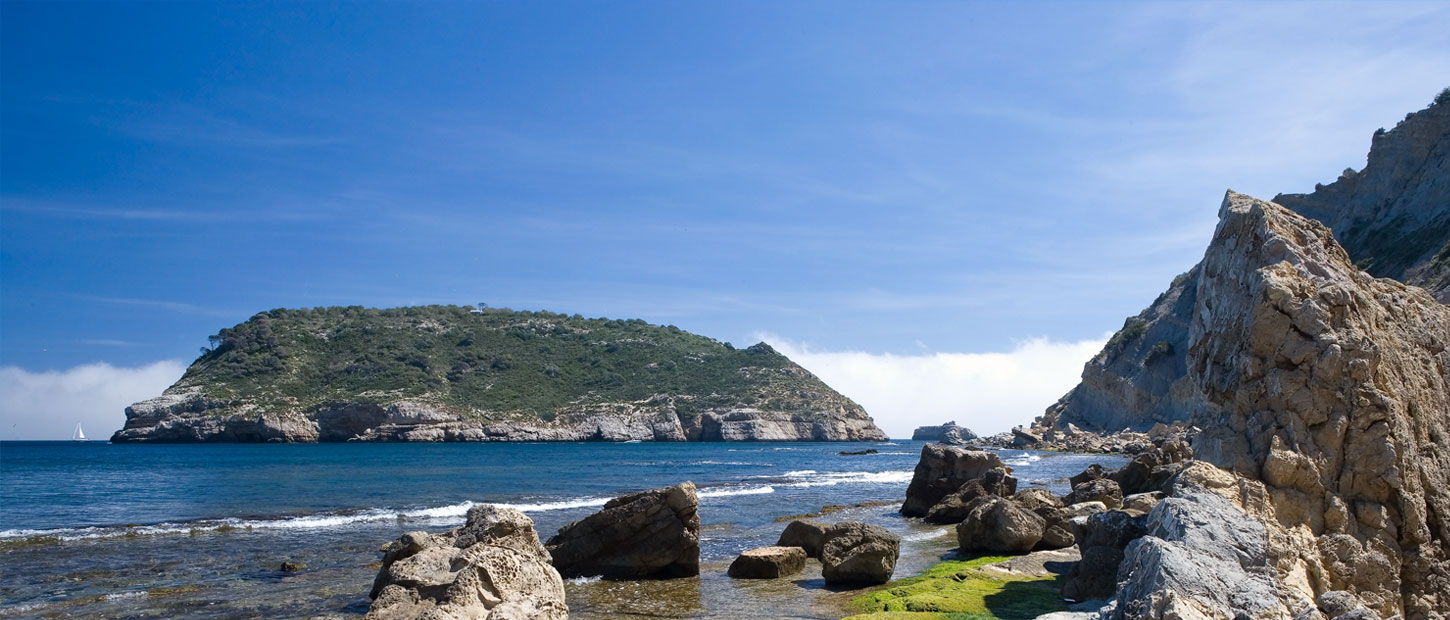
Javea
Javea is a municipality in the Valencian Community, Spain. Located on the north coast of the province of Alicante, in the Marina Alta region, it has a population of 32,983 inhabitants (INE 2012), of which 53.1% are foreign nationals.
Located in the north of the province, we can find it right at the most incoming point of the sea on the east coast. It is located about 90 km from Ibiza, being possible on clear days, to view the profile of the island from the two important headlands of the place.
Topography: The Montgó is the most remarkable and visual summit of the region, with its more than 750 m high, it often serves as a parapet for the storms that come from the North, collaborating, to a great extent, in the maintenance of the local microclimate. There are Cabo de San Antonio (to the north) and Cap Prim or Cabo de San Martín (to the south) between which the bay of Jávea is formed.
The most important cape, geographically speaking, is Cabo de la Nao, which represents the part that goes the furthest into the sea. The other capes that we can find are Cabo de San Antonio, Cabo Negro and Cabo de San Martín.
There are 2 small islands: The Portichol, in front of the Barraca beach and the Discoverer, in front of the nudist beach of Ambolo, an island whose name was put in honor of a Javanese who, according to what is said, was in the expedition of Columbus in the discovery of America.
There is a river that crosses from the West to the East of the region called "Jalón or Gorgos". It is a river that evacuates water when it rains, since during most of the year it is dry. Unlike nearby towns such as Denia or Oliva, Jávea has a varied orography, from a valley between the Montgó and the foothills of Cabo de la Nao and Pico de Benitachell, to the low plain of "Plá del Saladar" and the high plain from "Les Planes" (Cape San Antonio), beaches, coves, mountains etc.
Languages: Spanish and Valencian are official languages, very widespread among the natural population of the place. English is the most widely spoken foreign language, since Jávea has a population of about 6,000 English residents, the highest in the Valencian Community. German ranks second in foreign language (about 2,000 residents), far ahead of Dutch and French, Italian, Russian, etc. Some 85 nationalities are named with representatives living all year round in Jávea.
Climate: According to a scientific study carried out in the 90s, Jávea was considered the second best microclimate in the world, preceded by Rio de Janeiro, being able to enjoy a good temperature all year round with an average that oscillates between 18º and 24º. Proof of this is that it is the place chosen by a large number of foreign citizens to spend their retirement or flee the cold winters in their countries of origin. Although it does not rain very often, the green color is the one that predominates in its landscape, and this is due to the fact that Jávea has a lot of underground water stored in natural wells. The possibility that the name Xàbia may come from these underground wells is being considered, derived from the Arabic name Xábiga whose meaning could be translated as well or cistern. In addition to these wells, there is an underground river, called "Moraig" that comes from the internal mountains of Pedreguer, and whose source can be seen within the Cueva de las Calaveras in Benidoleig.
As for the rains, they occur with the typical rainfall regime of the Mediterranean, that is, very intense rainfall in a short period of time, with the months of September and October being the ones with the most rain. These precipitations, typical of the Mediterranean, are known as "cold drop" or Dana.
more information at www.xabia.org